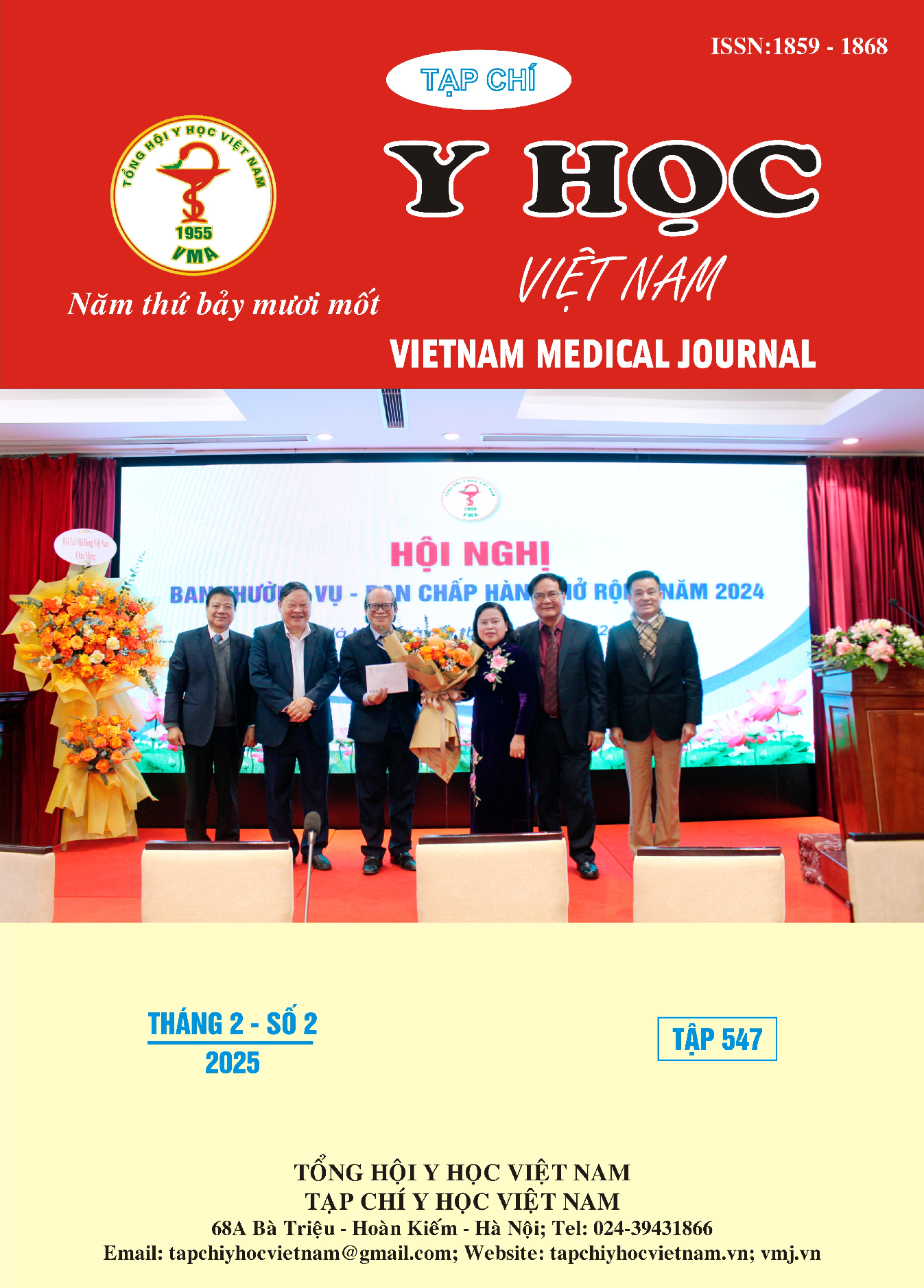ANALYSIS OF DRUG SELECTION CHARACTERISTICS IN HYPERTENSION TREATMENT: A MULTICENTER STUDY IN THU DUC CITY
Main Article Content
Abstract
Objective: This study aimed to analyze the prescribing patterns of antihypertensive medications among outpatients in Thu Duc City, Ho Chi Minh City, Vietnam. Methods: A cross-sectional descriptive study was conducted using retrospective data from all outpatient visits for patients diagnosed with hypertension (ICD-10 = I10) covered by health insurance at two Class-1 General Hospitals in Thu Duc City between January and September 2024. Antihypertensive drug utilization was evaluated based on the number of drugs prescribed per visit, the number of drug classes combined, and the strategies employed in drug combinations. Data were summarized as visit counts and percentages. Results: A total of 219,797 hypertension-related outpatient visits were included in the analysis. Among these, 96.4% involved hypertension with comorbid conditions, with 133,214 visits associated with cardiovascular diseases. Treatments involving 4 to 5 drugs accounted for 36%, while 6 to 7 drugs were prescribed in 25% of visits. Of the 201,964 visits where antihypertensive medications from guideline-recommended classes were used, 24.1% involved monotherapy, 32.2% involved dual therapy, 27.5% involved triple therapy, and 1.8% involved four-drug combinations. A wide range of combination regimens was observed within the five recommended drug classes. Conclusion: The findings highlight a notable proportion of patients who were either not initiated on combination therapy in line with current guidelines or received multiple single-agent drugs, resulting in complex regimens that may compromise adherence. To enhance treatment outcomes, the study emphasizes the importance of initiating combination therapy early and utilizing fixed-dose combination tablets, where feasible, to improve adherence and therapeutic effectiveness.
Article Details
Keywords
Hypertension, cardiovascular diseases, general hospitals, drug combination therapy, treatment adherence.
References
2. Trần Văn Khanh, Trần Thanh Thiện, Phạm Gia Thế (2024). “Đặc điểm mô hình bệnh tật Bệnh viện Lê Văn Thịnh giai đoạn 2018-2023”, Tạp chí Y học Cộng đồng, 65(6), 24-33.
3. Hoàng Thy Nhạc Vũ, Mai Ngọc Quỳnh Anh, Lê Hồng Tuấn (2024). “Phân tích tác động ngân sách của các bệnh lý tim mạch: Nghiên cứu tại Bệnh viện Lê Văn Thịnh”, Tạp chí Y học Cộng đồng, 65(6), 40-47.
4. Trần Hoàng Lâm, Phạm Thị Khánh Hòa, Tô Thị Bảo Yến (2024). “Khảo sát tình hình sử dụng thuốc điều trị tăng huyết áp ở bệnh nhân điều trị ngoại trú tại Bệnh viện Đa khoa Vĩnh Long”, Tạp chí Nghiên cứu khoa học và Phát triển kinh tế Trường Đại học Tây Đô, 20, 79-89.
5. Đinh Thị Thúy Hà, Trần Phúc (2024). “Tình hình sử dụng thuốc và hiệu quả điều trị ở bệnh nhân ngoại trú tăng huyết áp tại Bệnh viện Vũng Tàu năm 2023”, Tạp chí Y học Việt Nam, 542(2), 111-116.
6. Lê Phước Thành Nhân, Trần Văn Khanh, Trần Thị Ngọc Vân (2023). “Phân tích tình hình sử dụng thuốc điều trị tăng huyết áp cho người bệnh ngoại trú: Nghiên cứu tại Bệnh viện Lê Văn Thịnh năm 2021”, Tạp chí Y học Việt Nam, 522(1), 112-116.
7. Hồ Thị Họa Mi, Hoàng Thị Mỹ Hạnh (2023). “Nghiên cứu tình hình sử dụng thuốc điều trị tăng huyết áp trên bệnh nhân ngoại trú tại Bệnh viện Trung ương Huế”, Tạp chí Y học lâm sàng - Bệnh viện Trung ương Huế, 89, 167-175.
8. McEvoy, J.W., McCarthy, C.P., Bruno, R.M., et al. (2024). “ESC Guidelines for the management of elevated blood pressure and hypertension”, Eur Heart J, 45(38), 3912-4018.
9. Kreutz, R., Brunström, M., Burnier, M., et al. (2024). “European Society of Hypertension clinical practice guidelines for the management of arterial hypertension”, Eur J Intern Med, 126, 1-15.
10. Mancia, G., Kreutz, R., Brunstrom, M., Burnier, M., Grassi, G., Januszewicz, A., et al. (2024). “ESH Guidelines for the management of hypertension”, Eur J Intern Med, 126, 1-7.


